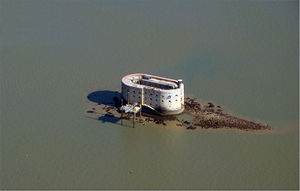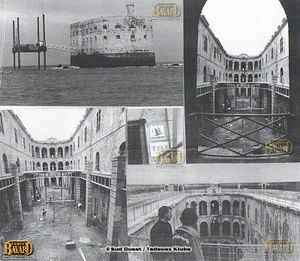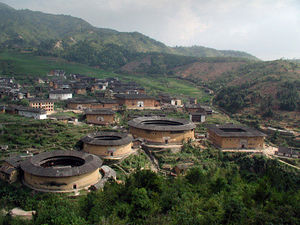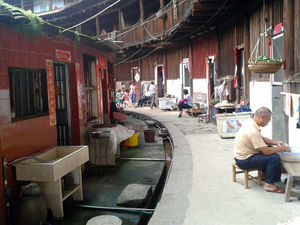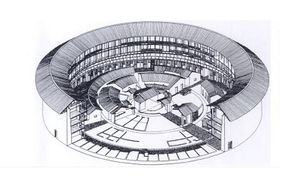User:Cristinac/fortboyard: Difference between revisions
(Created page with "<div style="width:80%"> ===Fort Boyard=== 300px 300px 300px The Fort Boyard is an artifi...") |
No edit summary |
||
| (One intermediate revision by the same user not shown) | |||
| Line 9: | Line 9: | ||
Due to increasing costs and the adverse location of the fort, construction had stopped temporarily until it was picked up again by Napoleon Bonaparte after a British raid. It would be finally completed in 1857, only to be rendered useless by the multiplicity of cannons. | Due to increasing costs and the adverse location of the fort, construction had stopped temporarily until it was picked up again by Napoleon Bonaparte after a British raid. It would be finally completed in 1857, only to be rendered useless by the multiplicity of cannons. | ||
The role of the fort changed throughout the years: from garrison to prison to TV set. It's interesting to note that this structure served both to prevent attackers from entering it and to ensure their entrapment later on. | The role of the fort changed throughout the years: from garrison to prison to TV set. It's interesting to note that this structure served both to prevent attackers from entering it and to ensure their entrapment later on. | ||
===Hakka Tulou=== | ===Hakka Tulou=== | ||
| Line 17: | Line 20: | ||
A different type of settlement appeared in Southern China: the Hakka Tulou, a large fortified building of three to five stories high that could house up to 80 families. It is a place for living, storing communal food and clothes, worship and ceremony. Just as the Fort Boyard, these buildings were also built for protection against perpetrators, however what's interesting to note in contrast to the former is that the Tulou form in cluster systems, based on clans. For this reason, there is no hierarchical element embedded in their structure. Communal activities happen in the central courtyard. | A different type of settlement appeared in Southern China: the Hakka Tulou, a large fortified building of three to five stories high that could house up to 80 families. It is a place for living, storing communal food and clothes, worship and ceremony. Just as the Fort Boyard, these buildings were also built for protection against perpetrators, however what's interesting to note in contrast to the former is that the Tulou form in cluster systems, based on clans. For this reason, there is no hierarchical element embedded in their structure. Communal activities happen in the central courtyard. | ||
What's this have to do with anything? | |||
Coming up! | |||
</div> | </div> | ||
Latest revision as of 01:22, 9 November 2015
Fort Boyard
The Fort Boyard is an artificial stone island situated along the West coast of France. It was initially built as a fortification of the line of defence, together with Fort Enet and Fort de la Rade. The ground floor of the building contained stores and quarters for the soldiers, enveloping a small yard in its middle. One floor up were the casemates for the emplacements of guns and further quarters and above were facilities for barbette guns and mortars.
Due to increasing costs and the adverse location of the fort, construction had stopped temporarily until it was picked up again by Napoleon Bonaparte after a British raid. It would be finally completed in 1857, only to be rendered useless by the multiplicity of cannons.
The role of the fort changed throughout the years: from garrison to prison to TV set. It's interesting to note that this structure served both to prevent attackers from entering it and to ensure their entrapment later on.
Hakka Tulou
A different type of settlement appeared in Southern China: the Hakka Tulou, a large fortified building of three to five stories high that could house up to 80 families. It is a place for living, storing communal food and clothes, worship and ceremony. Just as the Fort Boyard, these buildings were also built for protection against perpetrators, however what's interesting to note in contrast to the former is that the Tulou form in cluster systems, based on clans. For this reason, there is no hierarchical element embedded in their structure. Communal activities happen in the central courtyard.
What's this have to do with anything?
Coming up!


